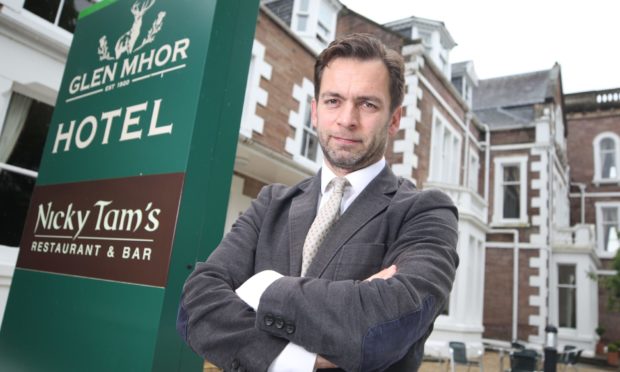Occupancy levels in the Highlands have clawed their way back to above 70%, bucking the pandemic trend.
Tiered restrictions across the country have had a detrimental effect on hotels in the central belt – with some effectively back to lockdown levels of hosting essential travellers only.
As a result, their occupancy levels have dropped to well below half full.
In the Highlands, sitting at level one, things have been better.
According to industry figures, Highland hoteliers have enjoyed occupancy levels of 70.7% while Glasgow plummeted to 26.9% and Edinburgh’s 3 Star market dropped to only 30%.
The surge in custom has generated optimism for business owners ahead, just months after many hotels were forced to trim and furlough staff in response to the earlier national lockdown.
Emmanuel Moine, chairman of Inverness Hotels Association, says depending on the guidance on place, the city will remain a safe and attractive option for UK tourists.
“The hotels in Inverness did a great deal, very early, to make sure visitors felt safe and able to enjoy everything the city and the Highlands has to offer,” he said.
“Obviously, although the Highlands is a very big area geographically, the population is relatively small and this has given people confidence to come here.
“The visitor trends show that Covid 19, and restrictions, have clearly impacted consumer confidence Scotland-wide – but we have been very fortunate to be able to still welcome people to the city.”
The October figures build on VisitScotland’s own consumer research.
In August, room occupancy rates were 85% while September’s figures stood at 86%.
The 70.7% occupancy rate for October is a decrease of 23.6% from the highs of October 2019.
Meanwhile, Glasgow’s October occupancy rate was 67.6% lower than the same month in 2019 while Edinburgh’s 4 Star hotels were down 77.2% on October 2019.
The city’s growing popularity and low levels of Covid-19 have also proved to be beneficial for visitors, with average room prices in August standing at £77, almost half of what they were in August 2019 (£142).
Chris Taylor, VisitScotland Regional Leadership Director, added: “Inverness and the Highlands are great places to live and visit and staycations have proved extremely popular since restrictions were eased in July.
“It has been encouraging to see so many domestic visitors and there is evidence to suggest a new homegrown audience is discovering and enjoying what the Highlands has to offer.”










